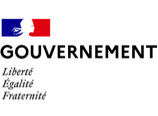Digital healthcare in Switzerland
8,7M
inhabitants in December 2021
11,8%
of GDP in healthcare spending in 2022
26
cantons responsible for healthcare provision
The federal structure of the Swiss healthcare system
Since 1996, Switzerland has guaranteed access to healthcare for all residents through compulsory insurance (AOS). The Swiss healthcare system is highly decentralized. The federal government defines the regulatory framework for the public healthcare system, and manages compulsory health insurance, communicable disease control, medically assisted reproduction and transplants. Cantonal governments are responsible for healthcare provision and implementing federal policies.
Financial flows are divided between the various levels of government and social insurance schemes. Resources are mainly collected via taxes and ASO premiums, with a significant share allocated to social insurance schemes, in particular to subsidize ASO premiums for low-income households.
The financial flows are distributed between the different levels of government and social insurance schemes.
Switzerland makes progress in digitizing its healthcare system
In international comparison, digitization of the Swiss healthcare system remains fragmented and not yet harmonized, which became evident during the Covid-19 pandemic. For example, collected data often has to be re-entered and cannot be used for other purposes. Switzerland wants to introduce the "once-only principle", which allows patients to provide their data only once, while permitting multiple uses. To achieve this, the country is striving to coordinate digital processes transparently and ensure that interfaces work smoothly, notably with the implementation of a joint strategy involving all stakeholders (healthcare professionals, e-health innovators, etc.).
The government's current "DigiSanté" program aims to close the gap between 2025 and 2034 when it comes to digitizing the Swiss healthcare system. One of the program's main objectives is to coordinate and align all partners in their responsibilities to pursue this shared ambition. At the same time, the development of DEP is being stepped up, with a view to widespread adoption among residents and healthcare providers.
How to access the Swiss digital healthcare market?
1. Obtain product classification as a medical device
Switzerland has thoroughly revised its legislation on medical devices to bring it into line with EU regulations.
Applications or software considered to be medical devices must obtain European CE certification or the Swiss medical device label to be legally placed on the Swiss market.
The procedure for obtaining the Swiss label is virtually identical to that of the EU. For example, the criteria for classifying medical devices are the same as those used in the EU. However, obtaining the Swiss label involves a few additional specificities, such as:
- The obligation for foreign manufacturers to appoint an authorized representative in Switzerland ("CH-REP").
- The mandatory registration of economic operators with Swissmedic in order to be legally placed on the Swiss market.
2. Obtain reimbursement from health insurance companies
To obtain reimbursement from health insurance companies, the manufacturer must prove that its device is effective, fit for purpose and cost-effective by following the Reimbursement for digital health apps under the AOS.
procedure.Sources for the qualification and classification of medical devices
The definitions of medical devices, in vitro medical devices and their accessories are specified in art. 3 of the Medical Devices Ordinance (MedDO) and to the art. 3 of the ordinance on in vitro diagnostic medical devices (IvDO).
Products are classified in classes I, IIa, IIb and III according to art. 15 MedDO or A, B, C and D according to the art. 14 IvDO, taking into account their intended use and associated risks.
It is the manufacturer's responsibility to classify his devices correctly. Art. 15 MedDO and art. 14 IvDO indicate that, for classification purposes, Annex VIII of the EU-MDR and the EU-IVDR apply, respectively.
More information on access to the digital health market
Classification guidance documents from the Medical Device Coordination Group (MDCG)
Government authorities
In charge of evaluation and legislation of health products.
Innovation hubs and poles
They bring together and facilitate the incubation of new technologies.
The associations
Some examples of associations bringing companies together and facilitating their incubation.
Courses and training
Some examples of Swiss universities and groups offering training and support for innovations in digital health.

